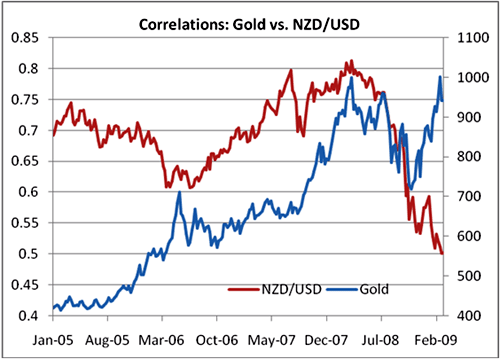The choice of the best technical analysis charting software very much depends on an investor's, trader's or chartist's needs and trading style. The financial instrument traded does not really play a major part in the decision process as almost all technical analysis (TA) software can chart stocks, bonds, commodities, forex, futures and options without any problems. As long as basic OHLC (Open, High, Low, Close) market data-feed is available, you're in business. All the TA software discussed below are capable of displaying chart types like OHLC, Line and Candlesticks, and also various standard technical indicators like MACD, RSI, Stochastics, Moving Averages and Fibonaccis, to name a few. Some of these software also contain some esoteric technical indicators like Bressert DSS, Woodie's pivots and Andrew's Pitchfork.
There are basically 3 types of Technical Analysis charting software. They are the End of Day (EOD), the Real-Time and the Analytics or Algorithmic Trading software (read Trading Charting Software for more details).
Another interesting software in this category is TradingSolutions. It is a financial analysis and investment software that combines technical analysis with neural network and genetic algorithms. It has the ability to learn patterns from historical data, allowing you to create highly accurate trading systems that inform you when to buy and sell for the various types of financial markets, including stocks, futures and currencies (FOREX).
There are basically 3 types of Technical Analysis charting software. They are the End of Day (EOD), the Real-Time and the Analytics or Algorithmic Trading software (read Trading Charting Software for more details).
End-of-Day Technical Analysis Charting Software
In this segment, there are two charting software that are head and shoulders above the rest of the competition. They are Metastock and NeoTicker EOD. Other than displaying stunning charts of stock trends, these software tools allow you to easily program trading systems and backtest them against historical financial data. They also include a multitude of technical analysis indicators that are sufficient for the most demanding of traders. Tradestation used to be a standalone product, very similar to Metastock, but since they are now integrated with a brokerage account, they are more of a real-time automated trading software.Real-Time Technical Analysis Charting Software
The undoubted kingpins in this area are Reuters and Bloomberg, but these systems are normally used by professional money managers and are just too expensive for the regular investors or traders. eSignal is one of the better real-time software which is very popular amongst active traders and which is packed with loads of technical analysis features (read eSignal review). In terms of price and functionality however, one of the best real-time technical analysis software is Medved QuoteTracker. Other than providing the best "bang for the buck", the other main notable feature of QuoteTracker is its seamless integration with data-feeds and integrated trading features from online brokers like Interactive Brokers, optionsXpress and Ameritrade.Analytical/Algorithmic Technical Analysis Charting Software
If "on-the-fly" real-time technical analysis scanning is what is required, it is difficult to beat the capabilities of NinjaTrader, Tradestation and NeoTicker. These software enable active traders to scan, in real-time, thousands of securities in search of ones that meet pre-programmed technical and fundamental analysis criteria. NinjaTrader and Tradestation also have the capability to automatically manage trades i.e. set profit targets, stop loss and trailing stops based on the trader's pre-programmed strategy using NinjaScript or Easy Language respectively. Another notable alternative in this segment is a lesser known but very capable software called StockWatch Pro. Both these analytics software can use a variety of data-feeds including live datafeeds from eSignal and QCharts. ** Note: StockWatch Pro's website at Crontech seems to have been taken down. It's a pity as this was such a capable piece of software.Another interesting software in this category is TradingSolutions. It is a financial analysis and investment software that combines technical analysis with neural network and genetic algorithms. It has the ability to learn patterns from historical data, allowing you to create highly accurate trading systems that inform you when to buy and sell for the various types of financial markets, including stocks, futures and currencies (FOREX).
Data-Feed for TA Charting Software
The data-feed is the lifeblood of any TA software so choosing a high quality feed will ensure that your investment in a TA software will not be in vain. Remember, "Garbage in, garbage out". Good real-time or EOD data-feeds like Reuters and Standard and Poors are expensive but they do get the job done. There are also some very good alternative data-feeds like eSignal, IQFeed and Stockwatch which are acceptable in quality and are quite reasonably priced (in the range of $20-$100 monthly). Most online brokers also provide a data-feed (usually for a nominal monthly fee) which can be of high quality. One such broker is Interactive Brokers, which provides a hardy real-time market data-feed for use in 3rd party charting front-ends like Medved QuoteTracker. A good test for a data-feed is to see how it performs during high intensive trading periods for e.g. like Fed Interest rate decision days. Data from a poor feed provider will lag badly during these periods. If just a free streaming service is required, you can't go wrong with ADVFN, who offer FREE streaming stocks and shares data from around the world

















































































































